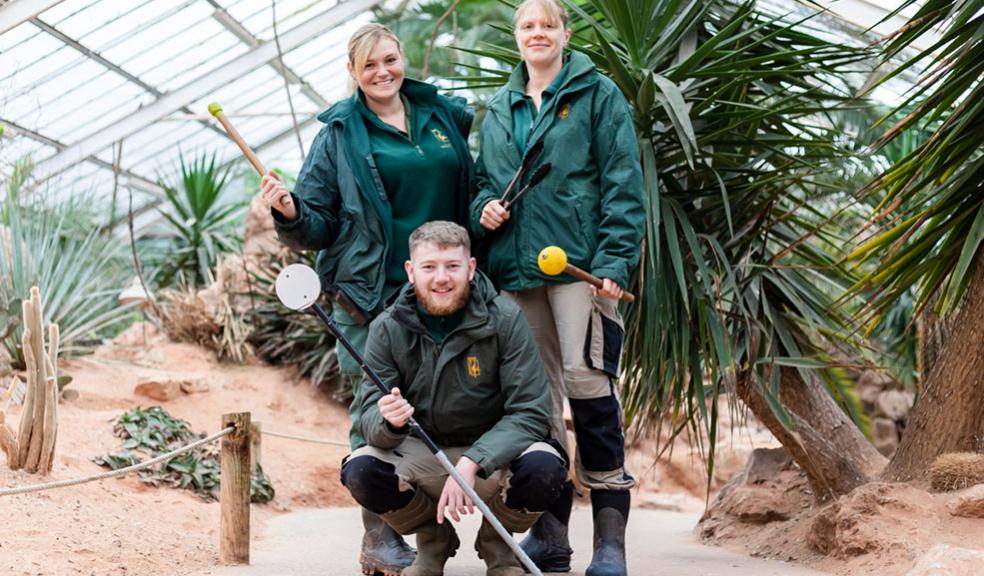
How to train your…
If animal training makes you think of tricks and shows, think again. Top zoos use training to improve animal welfare, reduce the need for risky general anaesthetics and to keep both animals and people safe.
For example, bird keeper Sam Gray has trained Alfie Junior the Southern cassowary – as tall as a person and part bird, part dinosaur – to follow a target, which means she can get him in his house easily and safely. For reptile keeper Tom Wilkinson, training Pierre the mangrove monitor lizard to walk calmly into his crate means you don’t need to catch him up – a procedure that can be stressful for both animal and staff.
And senior mammal keeper Helen Neighbour is very pleased to have trained male Sumatran tiger Lucu so that she can take blood samples without knocking him out. It helps that big cats are utterly food orientated, and will do anything for a meaty morsel – even let a vet insert a needle into them…
The end result is easier, more effective animal husbandry – but how do you achieve that? Zoo spokesperson Phil Knowling said: “The idea is to persuade the animal that what you want is also what they want. It’s about cooperation, trust and understanding. And the occasional morsel of food.
“The process involves time, patience and dedication; it can take many, many hours to train an animal to do what’s needed. The results, however, make it worth all the effort.”
Positive reinforcement training is about rewarding the behaviour you’re after, whether it’s a dog sitting or an elephant presenting its feet to have them checked. Target training means getting the animal to come to (and stay at) a target (usually, a disc or a ball on a stick).
“People often don’t think you can train reptiles or fish, but you can – the stingrays at Living Coasts have been trained to targets to help stop them squabbling over food. It’s down to the hard work and patience of the keepers, and the relationships they have with the animals in their care.”











